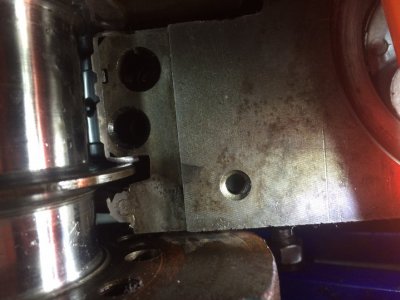When a crankshaft get's its bearing journals machined "under size" the machine shop can machine (called "turning") those journals to a variety of dimensions. They measure the existing journals, determine the amount of material that will need to be removed, in order to make them perfect again, and then do the machining. The machine shop can opt to turn the mains all at .010", or .020", and maybe even .030" depending on what they're working on, and the availability of bearings in over-sizes. They repeat the process for the rod journals. So you can have a crank with standard mains, and 10 under rods, or 20 under rods, or mains that are 10 under and rods that are standard, or any combination.
So......you need to look at your paperwork and read what they turned that crank. Are the mains still standard, or maybe 10 under, and you're trying to set 20 under bearings in there? That would certainly bind the crank.
And in case it's not clear, bearing caps are installed so that the anti-rotation tabs on the bearings are on the same side. This keeps the bearing from spinning when you get on and off the throttle.
If you can't tell what the shop did, call them. If you have a digital micrometer, measure the mains and compare that dimension to what the repair manual says is the size for the journal....and determine what you have, standard, 10 under, 20 under, etc.
You don't install bearing shells with oil on their back side.....ever.
My suggestion would be to lay the bearing shells in the block, give them a wipe of actual engine assembly lube, and then set the crank in. The crank should spin. If it does, do the same thing with the caps, one cap at a time, starting with the middle, and check to see if the crank spins after each cap is put on and tightened down.


